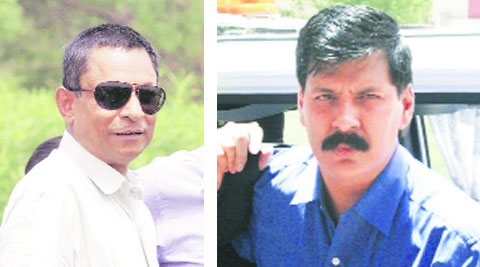It is important to acknowledge the contributions of IPS officers like Rajnish Rai and Satish Verma, who are willing to stake their careers for truth and justice

I was moved but not surprised to read in the newspapers that the inspector general of Police Rajnish Rai has filed a report questioning the March 30 2017 ‘encounter’ in Assam’s Chirang district. In this joint operation by the Army, Assam Police, CRPF and SSB, two militants were killed. Rajnish Rai in a courageous report concludes that the FIR filed by Assam Police on the operation and the special situation report prepared by other special forces ‘present a fictitious account of the joint operation by the security forces to conceal pre-planned murders of two persons in custody and present it as some brave act of professional achievement’. They were picked up from their village, killed in cold blood by men in uniform, and weapons placed on their bodies thereafter.
It is important for us to acknowledge with gratitude the contributions of public servants like Rajnish Rai, who are willing to stake their careers and futures to defend truth and justice, even if it involves standing against their own brothers and sisters in uniform. It is the same Rajnish Rai who was entrusted with the responsibility to assist in investigating the ‘encounter killing’ of Sohrabuddin Sheikh in March 2007 in Gujarat, ten years earlier. It was expected at that time by his superiors and peers that he would protect the state police and political establishment.
Instead he stunned his peers and seniors by arresting IPS officers D G Vanzara, Rajkumar Pandyan and Dinesh M N in April 2007 for the fake encounter murder of Sohrabuddin, his wife Kauserbi and close associate Tulsiram Prajapati. Pandyan was Rai’s batch-mate, and they had been close friends, spending time in each other’s homes. But Rai was convinced that his friend Pandyan had committed a grave crime of custodial murder. Rai also alleged that the then home minister and the police officers loyal to him were making every effort to cover up the crimes of the Sohrabuddin fake encounter case. He maintained that the Tulsiram Prajapati murder was also part of this conspiracy because he was a witness to the abduction by the police of Sohrabuddin and his wife Kauserbi.
Satish Verma, another Gujarat police officer, filed an affidavit in the High Court stating that the ‘purported encounter’ killing of 19-year-old Ishrat Jahan was not ‘genuine’. The investigations by senior police officers Satish Varma and Rajnish Rai led ultimately to the charge-sheeting and arrest of the then home minister and several senior police officers.
The winds of course changed course dramatically once the BJP-led government assumed power in Delhi in May 2014. One by one all the police officers were released from jail. All serving officers were reinstated and promoted, often to responsible positions. P. P. Pandey was released on bail in February 2015 and, in three days, was reinstated and given charge of a probe against Satish Verma, the police officer whose SIT probe had led to Pandey’s indictment in the first place. In April 2016, he was appointed the acting Director General, Police, Gujarat — a first in the country for a police officer charged with murder on bail to be given this high responsibility.

By contrast, police officers like Satish Varma and Rajnish Rai, whose intrepid investigations led ultimately to the charge-sheeting and arrest of the then Home Minister and several senior police officers, have been consistently victimised. Rai was not posted even once to the same location as his wife, an IAS officer in Gujarat, ever since his probe in 2007. Rai was posted in distant Shillong, and Verma in Agartala. A number of charges were levelled against them, their confidential reports sullied, and they were both superseded for their promotions.
But both officers are however unbroken, accepting stoically the personal and professional costs of doing what they believed was right. Rajnish Rai said to me that for him the highest satisfaction is that after the investigations that he and Satish Verma undertook, extra-judicial ‘encounter’ killings of alleged ‘dreaded’ terrorists came to an abrupt and absolute halt in Gujarat. Such ‘encounters’ had become had become commonplace between 2002 and 2005, and it was always claimed that the men and women killed were bent on assassinating the chief minister. These would not have ended if these two officers had not demolished the long-sustained tradition of impunity from any criminal investigation for custodial killings by police persons. This alone makes all that they have suffered and lost in their careers worthwhile for them.
Unsurprisingly, the government has responded promptly to Rai’s explosive newest report with another punishment posting, this time out of Shillong to Andhra Pradesh. Rai’s latest report that pulls the lid off the long tradition of custodial killings in India’s north-east shows that his spirit and valour are undimmed.
http://www.hindustantimes.com/columns/these-senior-ips-officers-are-examples-of-a-different-kind-of-courage-in-uniform/story-z7ZbMoth5qFIqJeVLP9TGP.html
June 23, 2017 at 9:55 pm
The services of sincere officers should be applauded. They are working in the midst of repressive environment